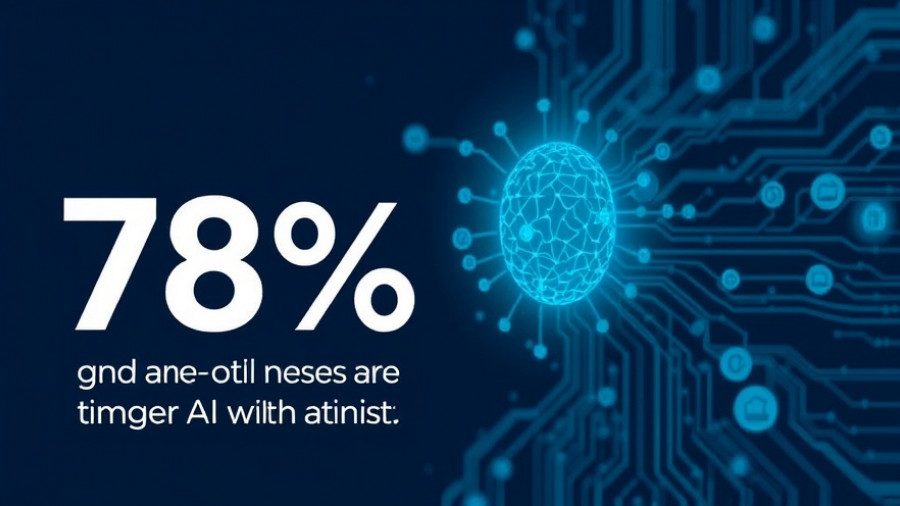
Understanding the AI Integration Quandary
The corporate world is buzzing with excitement about the transformative potential of artificial intelligence (AI). According to a recent survey conducted by Zapier, a staggering 92% of enterprises now prioritize AI as part of their business strategies. However, despite this enthusiasm, the journey to AI integration is fraught with challenges, particularly when it comes to aligning AI capabilities with existing IT infrastructures. A shocking 78% of enterprises reported struggling with this integration, facing numerous hurdles including high costs, skill gaps, and the complexities associated with legacy systems.
The Gravity of Legacy System Limitations
Many enterprises, despite being eager to adopt AI, have legacy systems that hinder their ability to fully leverage this technology. As highlighted in Cloudera's study on the state of enterprise AI, while organizations acknowledge the importance of AI, integrating it meaningfully into existing frameworks presents significant barriers. Nearly one-third of enterprise leaders identified these integration issues as their main obstacle, coupled with concerns around data quality and IT capabilities. With these findings, it's clear that efficient AI application demand not just new technologies but also an overhaul of outdated data architectures.
Peer Pressure: The Competitive Landscape Driving AI Adoption
Interestingly, the pressure to accelerate AI adoption comes not just from internal managers but from external competitors as well. Around 81% of leaders feel pressured by competitors making rapid advancements in AI. This competitive urge is pushing enterprises to prioritize solutions that enhance efficiency and customer experiences urgently. Yet, a lack of skilled personnel to operate and manage AI systems creates a bottleneck that companies must navigate—adding yet another layer to their AI adoption dilemma.
AI Cost Concerns: A Twice-Edged Sword
The extravagant costs associated with top-tier AI vendor solutions are proving to be a significant barrier, with 45% of leaders recognizing this as a primary issue. While AI possesses the potential to optimize processes and cut unnecessary expenditures, the initial investment can be prohibitive, particularly for enterprises restructuring their tech foundations. This imbalance highlights the challenge of balancing immediate operational expenses with long-term strategic investments in technology.
Integrating AI: Lessons from Agentic AI
As organizations look towards the future, embracing more sophisticated forms of AI, such as Agentic AI, becomes essential. Unlike traditional integration tools that follow set rules, Agentic AI learns and adapts autonomously to shifting needs and system updates, enabling a proactive approach to integration. The technology promises a future where integration isn't just possible—it's seamlessly self-managing. Companies recognizing and investing in these intelligent systems can find themselves ahead of the curve, setting a new standard for operational excellence.
Final Thoughts: Navigating AI Adoption as a Marketing Professional
For marketing professionals keen to navigate these turbulent waters, understanding the complexities of AI integration is critical. By grasping the challenges and emerging solutions, you can better advocate for necessary changes within your organization, fostering a culture that prioritizes innovation without sacrificing the stability of existing systems. As the landscape continues to evolve, being willing to adapt and make informed decisions will be key to leveraging AI successfully.
 Add Row
Add Row  Add
Add 




Write A Comment